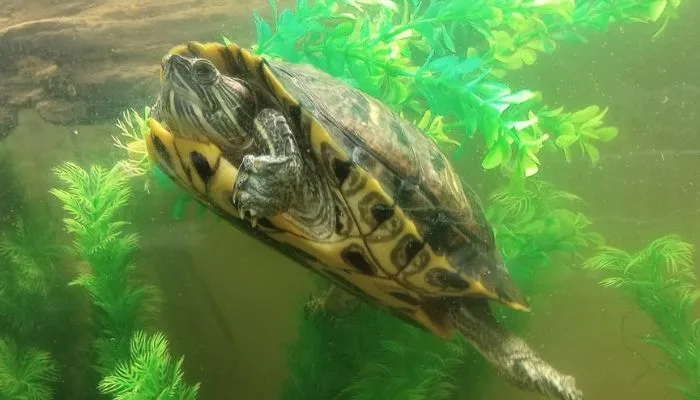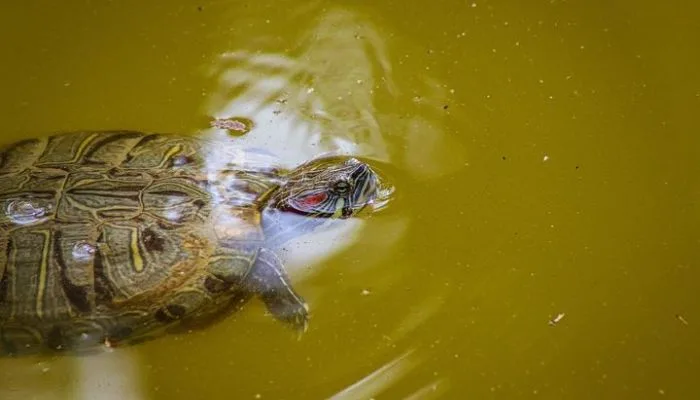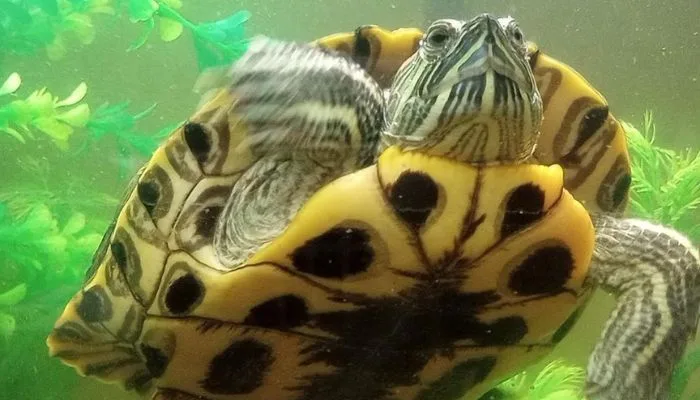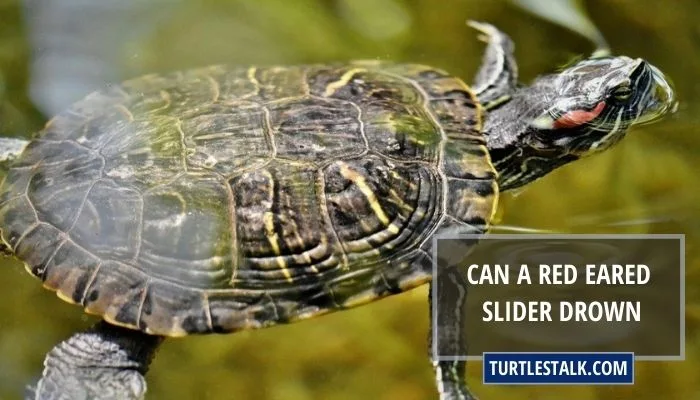Can A Red-Eared Slider Drown? Find Out How to Save Your Turtle!
Red-eared sliders are aquatic turtles that many pet owners keep in outdoor ponds or aquariums. These turtles are semi-aquatic, meaning that they need both land and water to survive. Many people may wonder if it is possible for red-eared sliders to drown in their habitat.
Yes, a red-eared slider can drown if it is unable to reach the surface of the water to breathe. Like all aquatic turtles, RES are able to breathe underwater by absorbing oxygen through their skin and the lining of their mouth and throat. However, they still need to come up to the surface of the water periodically to take a breath of air.
If a red-eared slider is unable to reach the surface of the water to breathe, it may become oxygen deprived and can drown. This can happen if the turtle becomes trapped under an object, such as a rock or plant, or if it is too weak to swim to the surface due to illness or injury.
How Long Can Red-Eared Sliders Breathe Underwater?
The red-eared slider is able to hold its breath for extended periods of time because of its ability to extract oxygen from the water through its skin and the lining of its mouth. This process is known as cutaneous respiration. When submerged, the turtle will close its nostrils and hold its breath to prevent water from entering its lungs.

A red-eared slider can hold its breath for up to 30 minutes during normal swimming. However, if the turtle is resting at the bottom of a pond or river, it can hold its breath for much longer periods of time. Adult sliders have been known to remain underwater for up to an hour or more.
Well, a turtle’s ability to hold its breath for extended periods is not unlimited. As the body uses the oxygen stored in its blood and tissues, it will eventually need to come up for air. Water temperature also plays a role in the turtle’s ability to hold its breath.
Warmer water temperatures can cause the turtle to use up its oxygen stores more quickly, while cooler water temperatures can slow down the turtle’s metabolism and allow it to hold its breath for longer. This turtle requires access to the surface of the water to breathe air, and extended periods of time without access to air can be fatal.
In captivity, they should have an area of their enclosure that allows them to swim to the surface and breathe air. This can be accomplished by providing a basking area or by keeping the water level in the enclosure low enough for the turtle to reach the top. If a slider turtle is kept in an enclosure that does not allow it access to the surface, it will not be able to survive for long.
How Do You Know if a Red-Eared Turtle Is Drowning?
It’s hard to know if your turtle is drowning as they are likely to stay underwater. There are several signs that can indicate that a red-eared turtle is drowning. You can rescue your turtle by identifying these signs. Some of the most common signs include:

Struggling to reach the surface
If your turtle is having difficulty reaching the surface of the water to breathe, this is a clear sign that it is in distress. The turtle may be seen paddling frantically or making desperate attempts to reach the top of the water.
Floating on the surface
The turtle may seem floating on the surface of the water, this may indicate that it is unable to submerge itself. This can be a sign that the turtle is having difficulty breathing or is unable to control its buoyancy.
Open Mouth Breathing
If your turtle is seen taking rapid and deep breaths, this can be an indication of drowning or stress. Monitor your turtle while it is underwater to prevent this.
Loss of muscle control
A drowning Turtle will be seen floating on its back or upside down, this can be a sign that it is losing muscle control. This can be caused by a lack of oxygen, which can be caused by drowning.
Lack of movement
Another sign of drowning is no movement of the turtle, and it could be a sign that it has drowned or is close to drowning. Immediately take action at this point.
What to Do if Your Red-Eared Slider Turtle Is Drowning?
If you suspect that your red-eared turtle is drowning, it’s important to take immediate action to help the turtle. Some things you can do include:
Remove the Turtle From the Water
The first step in helping a drowning turtle is to remove it from the water as soon as possible. Use a fish net or your hands to gently scoop the turtle out of the water and place it on a dry surface.
Provide Artificial Respiration
If your turtle is not breathing, it’s important to provide artificial respiration to help it start breathing again. Hold the turtle upside down and gently press on its chest to help expel any water that may be in its lungs.
Check for Other Injuries
In some cases, a turtle may have drowned as a result of another injury or illness. Check the turtle for other injuries or signs of illness and provide appropriate treatment.
Assess the Environment
Check the turtle’s enclosure and ensure that it has access to the water’s surface and that the water is clean and at the appropriate temperature.
Consult a Veterinarian
If you suspect your turtle has drowned, it’s important to consult a veterinarian as soon as possible. A veterinarian will be able to assess the turtle’s condition and provide appropriate treatment.
How to Prevent My Red-Eared Turtle From Drowning?
Preventing drowning in red-eared turtles requires providing proper care and the right environment. There are several ways to prevent your red-eared turtle from drowning and ensure their safety and well-being.

Provide Access to the Surface
One of the most important things you can do to prevent your red-eared turtle from drowning is to ensure that it has access to the surface of the water. This can be accomplished by providing a basking area or by keeping the water level in the enclosure low enough for the turtle to reach the top. If your turtle is unable to reach the surface of the water, it will not be able to survive for long.
Proper Tank Size
Ensure that your turtle has a tank or enclosure that is large enough to accommodate its size and swimming needs. Turtles need room to swim and explore, so it’s important to provide a tank at least four times the turtle’s length. If the tank is too small, the turtle cannot swim and may become stressed, which can lead to drowning.
Proper Water Temperature
Water temperature also plays a role in the turtle’s ability to hold its breath. Warmer water temperatures can cause the turtle to use up its oxygen stores more quickly, while cooler water temperatures can slow down the turtle’s metabolism and allow it to hold its breath for longer. Maintaining the water temperature between 75-80 degrees Fahrenheit is important to keep your turtle healthy and comfortable.
Proper Water Quality
Proper water quality is also crucial in preventing drowning in red-eared turtles. The water should be kept clean, clear, and oxygenated. You should change the water in the tank regularly and use a filter to help keep the water clean. Additionally, providing adequate aeration, such as an air pump or filter, will help ensure there is enough oxygen in the water for the turtle to breathe.
Provide a Basking Area
Red-eared turtles also require a basking area where they can rest and dry off. This can be achieved by providing a platform or a rock for the turtle to climb out of the water. A heat lamp or other heating source should keep this area warm.
Conclusion
Your red-eared slider turtles can remain submerged underwater for long periods of time, they still need access to air to breathe. It can drown if kept in an aquarium with inadequate aeration.
Ensure water levels are kept low enough that the turtle can easily reach the surface to breathe and that a filter is used to prevent the water from becoming stagnant. With the right care and attention, these turtles can live long and healthy lives in captivity.

